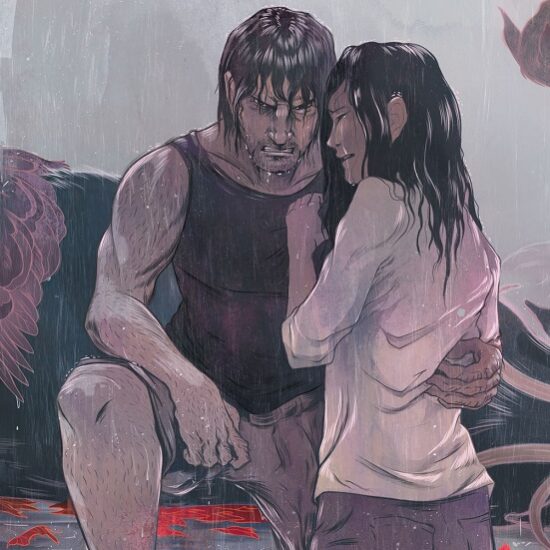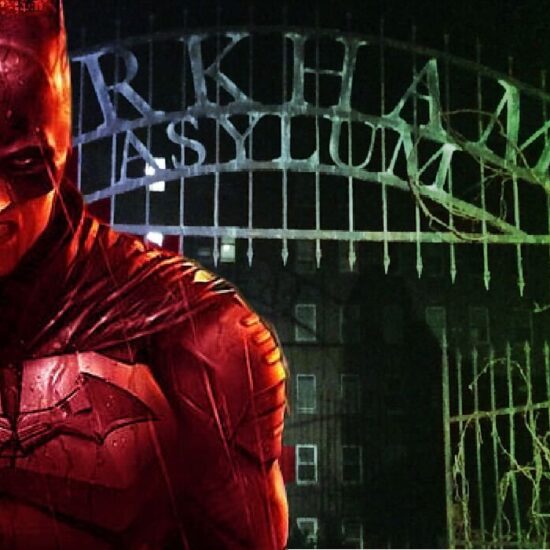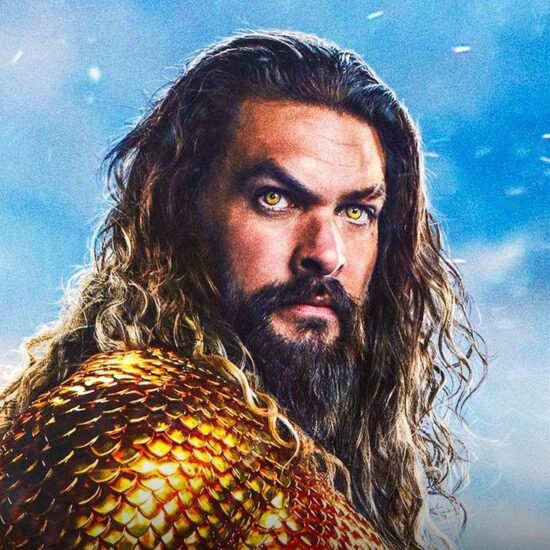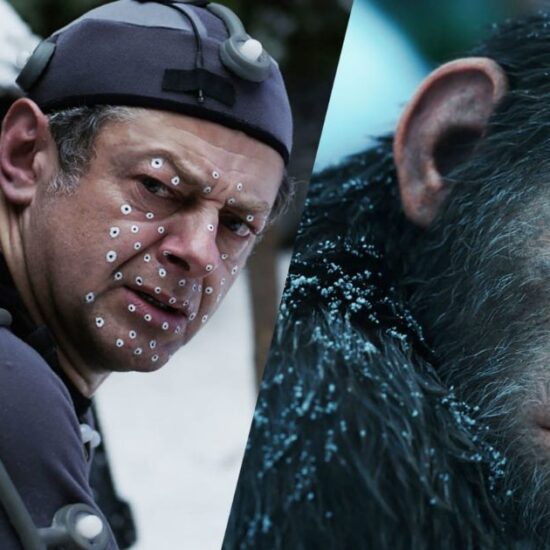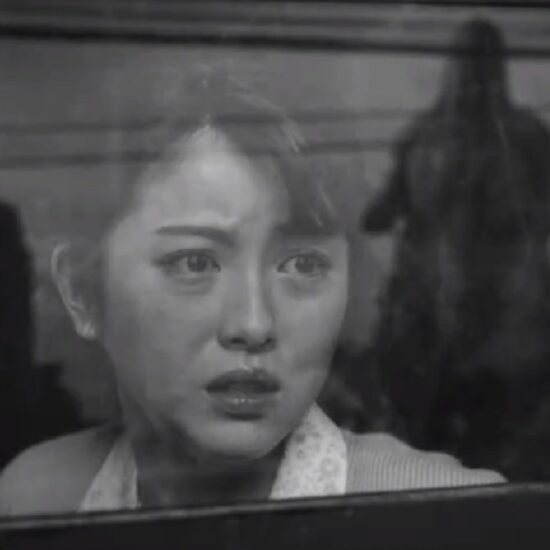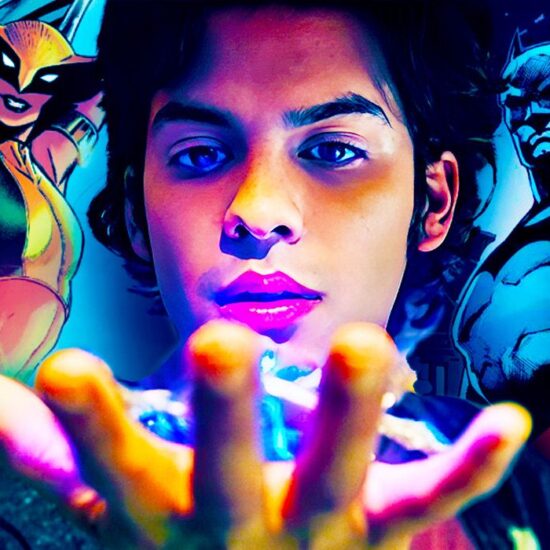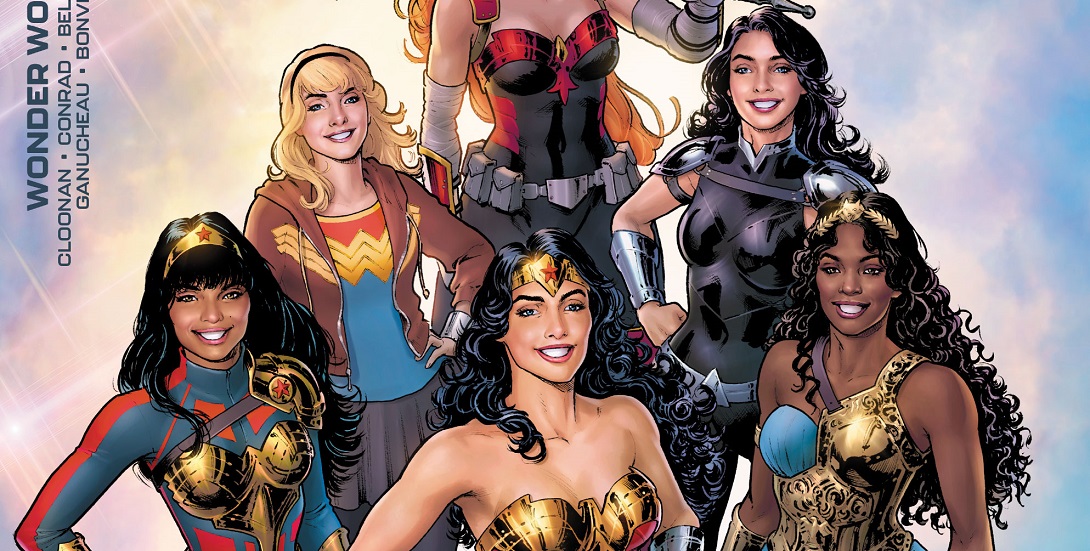
257
At end of Dark Nights: Death Metal, Wonder Woman “died” at the pen of Scott Snyder. The plan was for Diana to ascend to godhood and take her place among the Olympians. Somewhere between that and Wonder Woman #770 something changed. Wonder Woman #769 wrapped up the “Liar, Liar” storyline with Maxwell Lord and his daughter by Mariko Tamaki, which didn’t quite benefit from the synergy it was trying to channel with the just-released Wonder Woman 84 feature film. At the same time in the Future State event that ran in January and February of 2021, the ascended Diana appears in Future State: Immortal Wonder Woman while it seems the mantle of Wonder Woman on the earthly plane would be passed to Yara Flor appearing in Future State: Wonder Woman and Future State: Superman and Wonder Woman. The Future State event was explained as possible futures, but with all the new characters being introduced, it really felt that this WAS the future. There was even this cancelled “5G” event that had been cancelled and it certainly felt like these new characters were the leftovers of that event. So, it was easy to image that Yara Flor would be the new Wonder Woman coming out of Future State if Diana had indeed ascended to a higher plane of existence- the events of Dark Nights: Death Metal seemed to link up perfectly with Future State: Immortal Wonder Woman. However, when Wonder Woman #770 appeared in March, 2021 that’s not quite what had happened. The new writers on the title were Becky Cloonan and Michael W. Conrad who had just chronicled Diana’s adventures in Future State: Immortal Wonder Woman. And, while this certainly appeared to be an indicator that Diana would be depicted in her ascended state…it just wasn’t quite that at all.
“Afterworlds”
Cloonan and Conrad came out of the gate with a 10-part epic story, “Afterworlds.” While it does pick up with Diana in the afterlife where she left by Scott Snyder at the end of Dark Nights: Death Metal, it wasn’t the afterlife as seen in Greek Mythology. Instead, Diana was in Valhalla, where warriors in Norse Mythology are taken by the Valkyries after dying on the field of battle. Diana would make a friend and lover (YIKES!) of Sigfried, Teutonic hero of The Ring of the Niebelung in Valhalla as a little voice in her head urged her to make her way back home. Diana’s trek through the “afterlives” of different cultures finally saw the Amazing Amazon return to Earth.
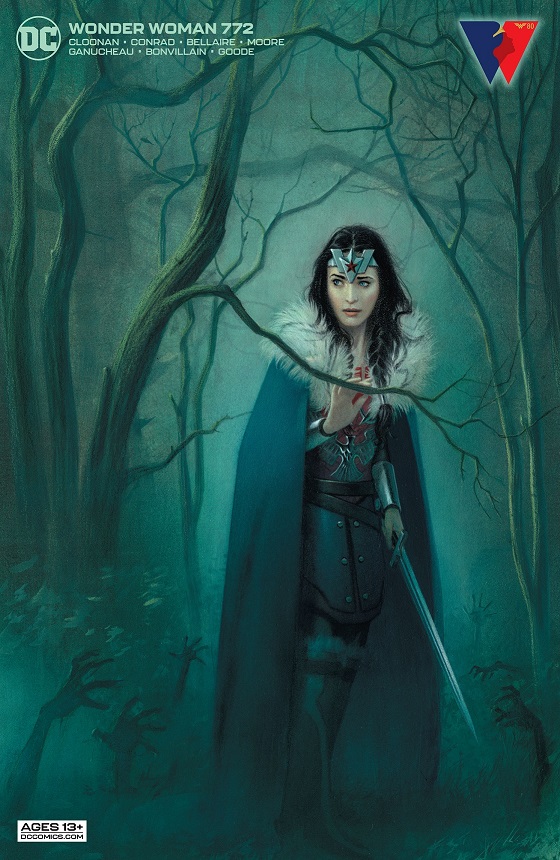
While this first story arc succeeded in returning Diana to her life on Earth, along the way Cloonan and Conrad added some new characters to Diana’s supporting cast, chiefly Sigfried and they also allowed “Afterworlds” to touch on the major core aspects of Diana’s character- connection to Greek Myth/Legend, fierce warrior, loyal, caring friend and advocate for peace. Some aspects of Diana can seem like a contradiction, but that’s one of the reasons she’s so interesting. As Diana fights along side Sigfried in the endless glory of battle in Valhalla, the reader is reminded of the martial aspect of Diana’s character. Known chiefly for her magic lasso, Diana is also pretty good with a sword and shield.
Diana’s trip through the afterlives leads her to Olympus and the confrontation with Janus as Cloonan and Conrad remind the reader that Diana always has one foot in the world of Greek Mythology. This in turn leads Diana to a trip through the multiverse as Diana and Sigfried stick together through thick and thin. This jaunt through worlds of the DC Universe demonstrate the integrity of Diana to the shared continuity as one of the three pillars of the Trinity along side Superman and Batman.
Finally, the new characters that Diana meets along the way reveal her caring and loyal nature as well as how she engenders the same in others. Be it Sigfried or Ratatosk, the squirrel from Yggdrasil, the world tree. these new friends become as close to Diana due to the quality of her character. Her caring, love and compassion shine through all her interactions with friend and foe
Back In Man’s World
When Diana returns to Earth she wastes no time in trying reconnecting with her friends, Etta Candy, Steve Trevor and the members of the Justice League as well as Cassie Sandsmark and Donna Troy. Once again, Diana’s loyalty and caring nature are highlighted as she sees her friends and colleagues. It’s a reminder that it’s OK for comics to be happy, and it’s OK to feel happy. This positivity echoes Diana’s outlook on life. At this point, Cloonan and Conrad turn to a different aspect of Wonder Woman’s 80 year history. In a genius move, the writing duo begins exploring many of the original themes present in the original Golden Age Wonder Woman stories by Diana’s creator, William Mouton Marston.

While in Asgard, Diana had an encounter with Dr. Psycho, and upon her return she learns that Psycho is peddling a “macho man” campaign. Throughout the storyline he manifests his powers exactly as he did in his first appearance way back in Wonder Woman #5 (1943). Additionally, he utilizes the International Milk Company a company that can trace its first and only (?) appearance to Sensation Comics #7 (1942). Dr. Psycho is playing the long game as its slowly revealed he has some shadowy backers who seem to be behind the whole thing.

Marson’s Themes
Cloonan and Conrad use Psycho’s campaign against women as a way of addressing a theme from Marston’s Wonder Woman’s stories. Marston created the character to to be an heroic feminine alternative for girls in the early comic book industry dominated by male heroes. However, upon inspection of those early issues of Wonder Woman and Sensation Comics, it becomes apparent that Marston isn’t just putting a female character in a male hero’s story, but rather suggesting a completely different approach to viewing the world. This isn’t new, Marson’s agenda is well documented. Marston suggests that love, understanding and compassion are more powerful and more effective than aggression, violence and corporal punishment, approaches typically associated with a masculine bent. Cloonan and Conrad use this theme throughout the run, not only as evidenced by Diana’s personal relationships with friends, but her real belief that she can rehabilitate Dr. Barbara Minerva, the Cheetah. It’s something that goes back to the Golden Age as Diana and her Amazon sisters believe that the original Cheetah (Priscilla Rich) and Paula Von Gunther can be rehabilitated through Amazonian methods based on love, compassion and understanding.
The deeper and subtler themes are paired with some more overt references to the past. Cloonan and Conrad reintroduce Etta Candy’s classmates from Holliday College, the Holliday Girls for a modern audience. As in the Golden Age, the Holliday Girls take no prisoners and are always capable and up to whatever task they take on. We also get to see Barbara Minerva show up in the Golden Age Cheetah costume of Priscilla Rich. Even one of Diana’s earliest foes, the Duke of Deception was brought back in a storyline.
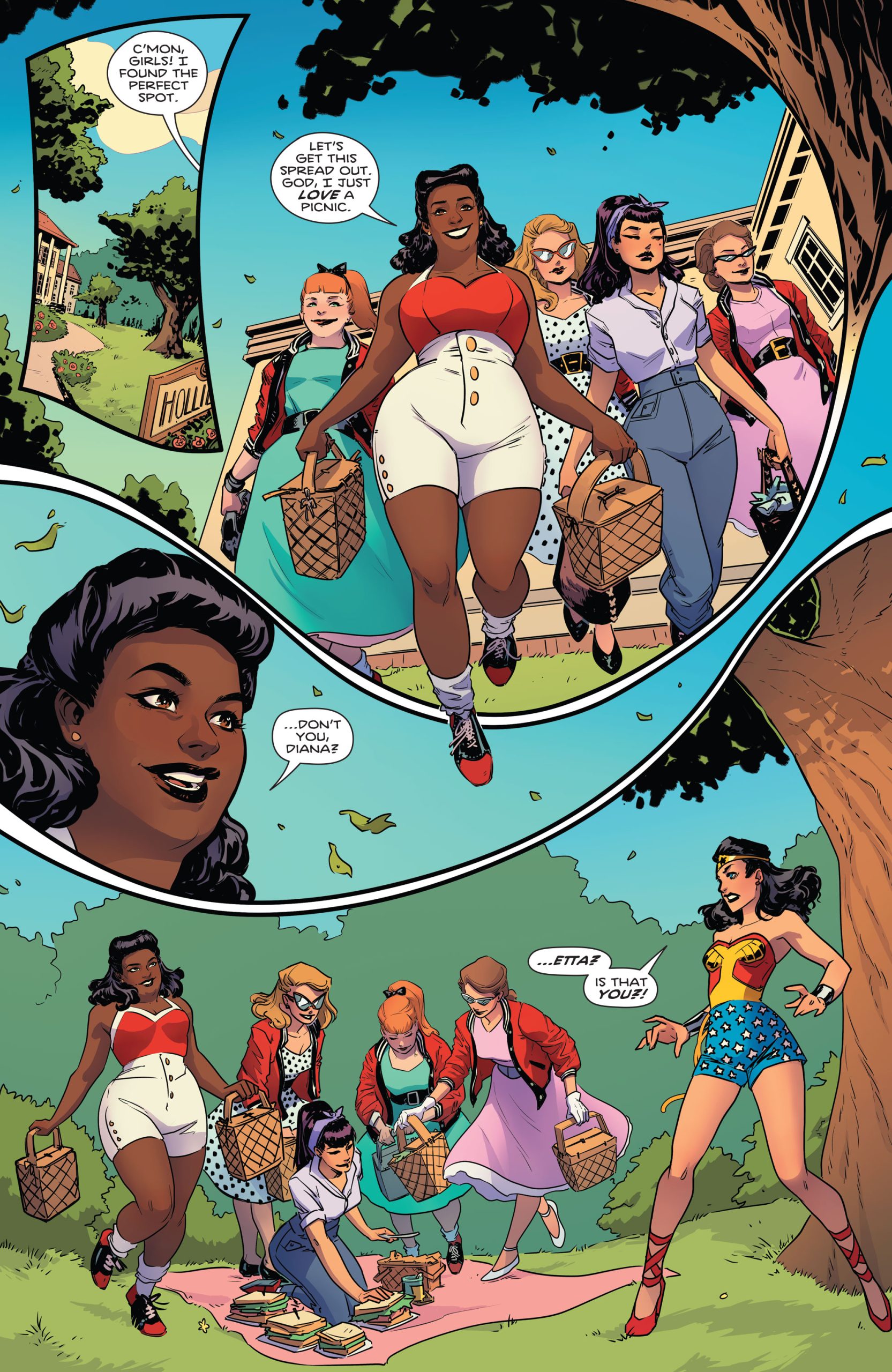
The most interesting reference to Wonder Woman’s past occurs when Sigfried joins Diana on Earth and Steve Trevor takes the legendary warrior on as a roommate. While Steve and Sigfried never do more than become great friends, they are written with a certain sensitivity. At this point, Diana is essentially stuck with two suitors, Sigfried and Steve. The two men maintain a friendship knowing that they both love Diana, but they never let it get in their way. And, Diana, never treats one more intimately than the other. Cloonan and Conrad have developed the mirror image of Marston, his wife and his live in lover. Marston, despite being a professed feminist had no problem having a wife and mistress in an open relationship. Diana, Steve and Sigfried never engage in any sort of romantic encounters all together, or separately, but it’s clear that Cloonan and Conrad are paying homage to Marston and his unique view of the committed relationship.
Wonder Woman Interrupted
During their tenure on Wonder Woman, Cloonan and Conrad were required to navigate two events that impacted the stories they were in the middle of telling. It’s important to note that even though they gave their all and backed both events with enthusiasm, these events clearly interrupted what they were doing on Wonder Woman. However, they never gave any indication how they felt about! “Trial of the Amazons” split up the first part of the Dr. Psycho storyline. The death of Hippolyta in that story seemed odd as Diana had just gone through the whole “ascension” bit herself recently. More importantly, it distracted from the main Wonder Woman title. It didn’t flow easily back and forth and the event truly felt forced.
The more recent Lazarus Planet event didn’t just distract, it seemed to truncate what would’ve been a much longer and incredibly interesting third act to a story arc. Wonder Woman #795 ends on a surprising cliffhanger/ turn of events in which the population of Washington, D.C. has been affected by Eros into loving Diana…TOO much. The pace of the arc certainly feels like this will be explored over a few issues, perhaps even right up to a resolution in issue #800. However, it’s wrapped up really quickly in issue #796 with that issue heading right into Lazarus Planet. As the next two issue serviced the Lazarus Planet event, it doesn’t take a lot to figure out that Cloonan and Conrad were being team players despite their final story arc being truncated.
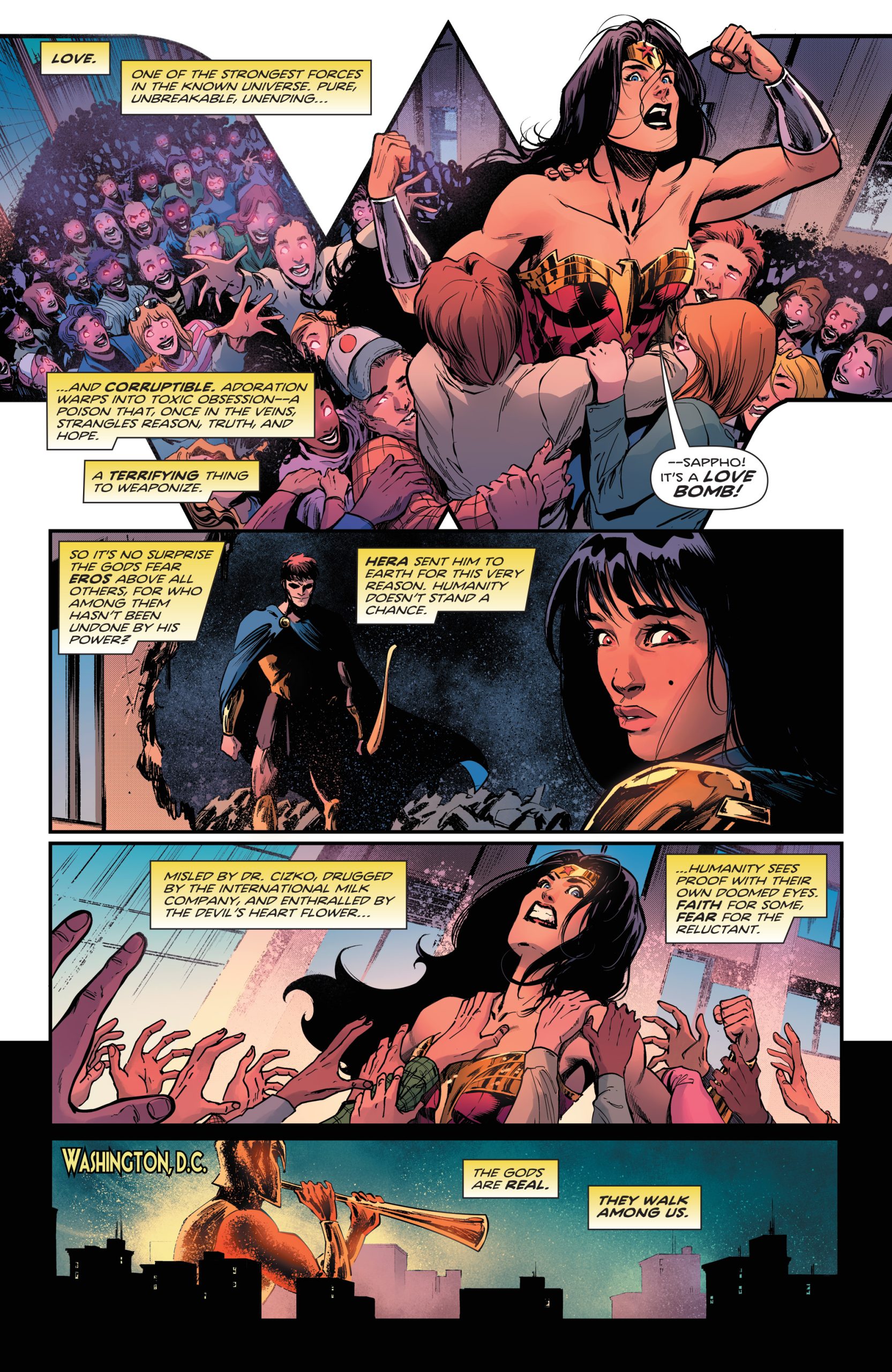
Dawn of DC?
Wonder Woman #800 the last issue to feature Cloonan and Conrad as the writers with DC Comics having decided to go in a different direction for the Dawn of DC. Tom King’s first story also appears in issue #800 with his first full issue in a relaunch in September with a new #1 (Legacy #801). The Dawn of DC banner is supposed to indicate a sort of “back to basics” for characters with good jumping on points. Having already seen the solicit for new Wonder Woman #1, it doesn’t sound much like “back to basics” for Diana. If anything, it sounds like a rehash of themes in “Amazons Attack” from 2007. One can’t criticize king for nostalgia for a favorite era, but that wasn’t an even that went over that well at the time, and it certainly is about as far away from a “back to basics” approach that one could imagine. Diana as Public Enemy #1 is more along the lines of King’s tendency to deconstruct the characters he writes (there are a few exceptions) rather than lean into what makes them tick. Ironically, the entirety of Cloonan and Conrad’s run WAS a “back to basics.” After restoring her to the world of the living from the afterlives, the writing duo brought back themes rooted in the essence of the character as well as restoring classic elements to the series.
The same can be said for Jeremy Adams on The Flash. Adams spent his entire run undoing the damage to Wally West perpetrated on the character in Heroes in Crisis (by Tom King!) and returning the character to the status quo for which fans had been clamoring. This is evidence that DC Editorial doesn’t really know what it’s doing, it struggles to tell what’s good and what fans want. King’s Wonder Woman may sell, but it’s won’t be because it’s a good interpretation of the character (it may or may not be) but, rather because King is a polarizing and controversial writer. More people will pay to watch a traffic accident than an act of kindness.
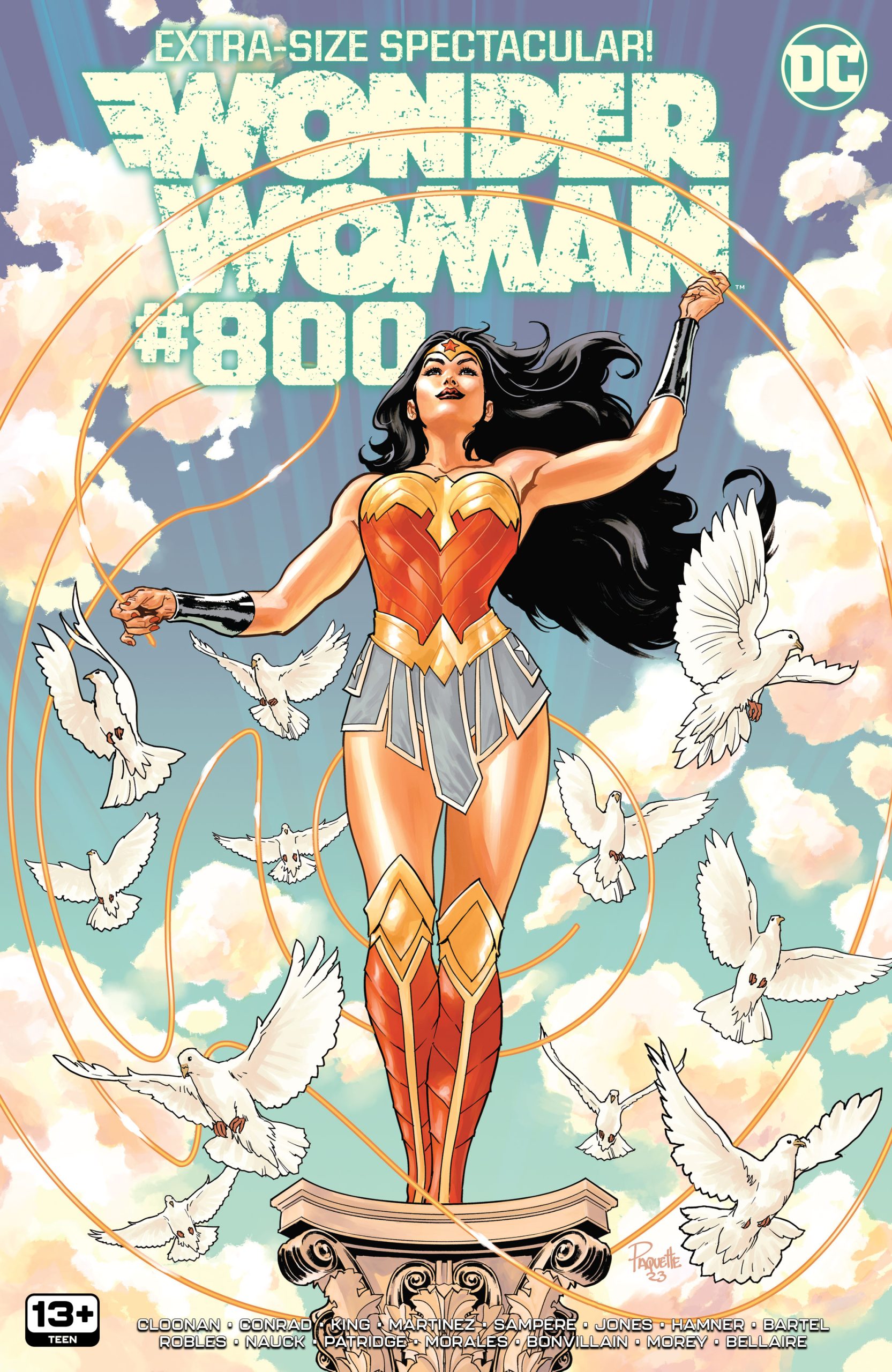
“Whatever Happened to the Warrior of Truth?”
Wonder Woman #799 and #800 conclude Becky Cloonan and Michael W. Conrad’s run on Wonder Woman. cleverly they channel a classic Superman tale as they adapt the format of “Whatever Happened to the Man of Tomorrow?” (Neil Gaiman did the same thing for Batman with “Whatever Happened to the Caped Crusader?”). This final tale by the duo revisits the character not so much as events in a life or a history, but rather an exploration of the themes that make Wonder Woman who she is. It’s fitting that their run ends with the themes that have made it so good. Perhaps, the cleverest bit is at the end of Wonder Woman #800 is when Conrad and Cloonan appear to have stealth restored Diana’s original clay figure origin. It’s subtle, but Hippolyta gives Diana what amounts to a “pep” talk and the language references the original clay figure origin. It’s smart. It works on two levels, reminding the reader that love and compassion are at the core of the character. Whatever comes next for Wonder Woman, this run will stand as a unique, interesting and intelligent run by creators who truly understand the character.









